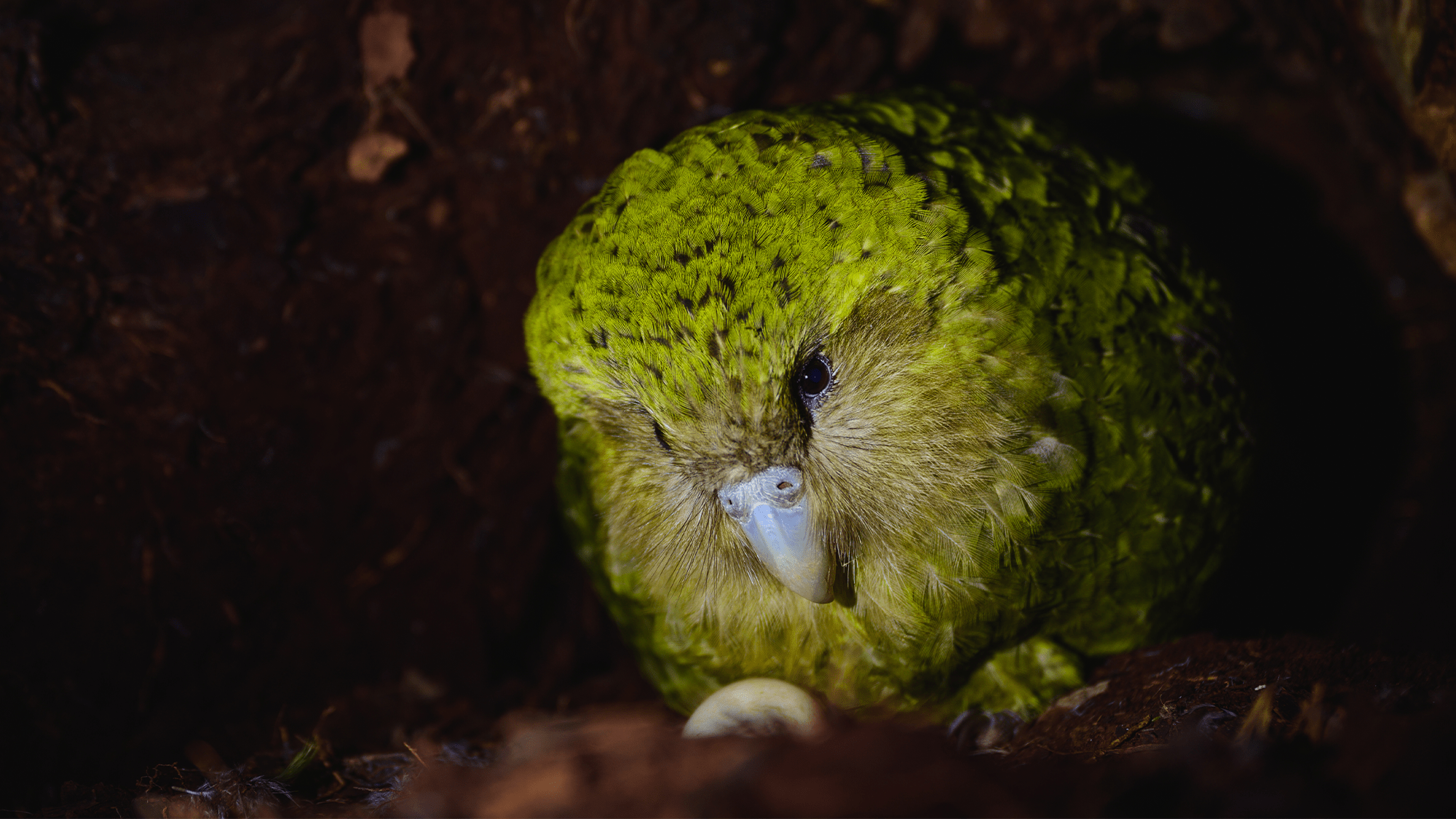

New Zealand’s quirky and critically endangered kākāpō have begun to return to the country’s mainland for the first time in almost 40 years. Kākāpōs are the heaviest parrots in the world, with some exceeding six pounds, and they have a lifespan of up to 90 years. Like penguins and ostriches, they can’t fly, so kākāpōs climb trees and forage on the ground for nuts and seeds to eat.
[Related: A flightless parrot is returning to mainland New Zealand after a 40-year absence.]
The big, green, nocturnal birds used to be widespread across New Zealand, but were hunted to near extinction and threatened by non native predators like cats and dogs. Popular Science magazine described these “curious” green birds as already being “doomed to early extermination” all the way back in April 1895.
The roughly 250 or so individual birds that are left are managed by New Zealand’s Department of Conservation (DOC) and the South Island’s Ngāi Tahu tribe on five islands that are free of predators. Now equipped with 21st Century genetic science, research platform Genomics Aotearoa is funding high-quality genetic sequencing of almost the entire kākāpō population. The results of an early study of how these full genomic sequences will help manage the health of these iconic birds was published August 28 in the journal Nature Ecology & Evolution.
Establishing genetic sequencing methods is not expected to only play a part in kākāpō survival, but other endangered species throughout New Zealand and the rest of the world. Conservation genomics is part of a growing trend in the field. In 2019, a team from San Diego and the University of Hawaii used advanced DNA sequencing technology to create a nearly complete genome assembly for Hawaii’s only remaining lineage of the crow family ‘alalā (Corvus hawaiiensis). The sequencing gave conservationists critical clues into the disease susceptibility, population-level diversity, and genetic load of the alalā to better inform their policies.

The same information could help the kākāpō thrive. This work over the last year has produced two very significant outcomes. First, it has given the team an in-depth understanding of kākāpō biology. It has also produced a high-quality code and reusable pipeline, which allows other researchers to rapidly use these methods in their own work and advanced New Zealand’s genomic capability.
“Kākāpō suffer from disease and low reproductive output, so by understanding the genetic reasons for these problems, we can now help mitigate them,” Andrew Digby, the DOC’s Science Advisor for Kākāpō Recovery, said in a statement. “It gives us the ability to predict things like kākāpō chick growth and susceptibility to disease, which changes our on-the-ground management practices and will help improve survival rates.”
[Related: Eavesdropping on pink river dolphins could help save them.]
Diby added that the Kakapo125+ project is another example of how genetic data can assist population growth. The 125 refers to the number of kākāpō living when the project began in 2015. “The novel genetic and machine learning tools developed can be applied to improve the productivity and survival of other taonga under conservation management,” said Digby.
The sequencing technique was developed by University of Otago microbial scientist Joseph Guhlin and an international team of researchers and could have impacts outside of New Zealand.
“Using technology created by Google, we have achieved what is likely the highest quality variant dataset for any endangered species in the world,” said Guhlin. “This dataset is made available, through DOC and Ngai Tahu, for future researchers working with kākāpō.”
